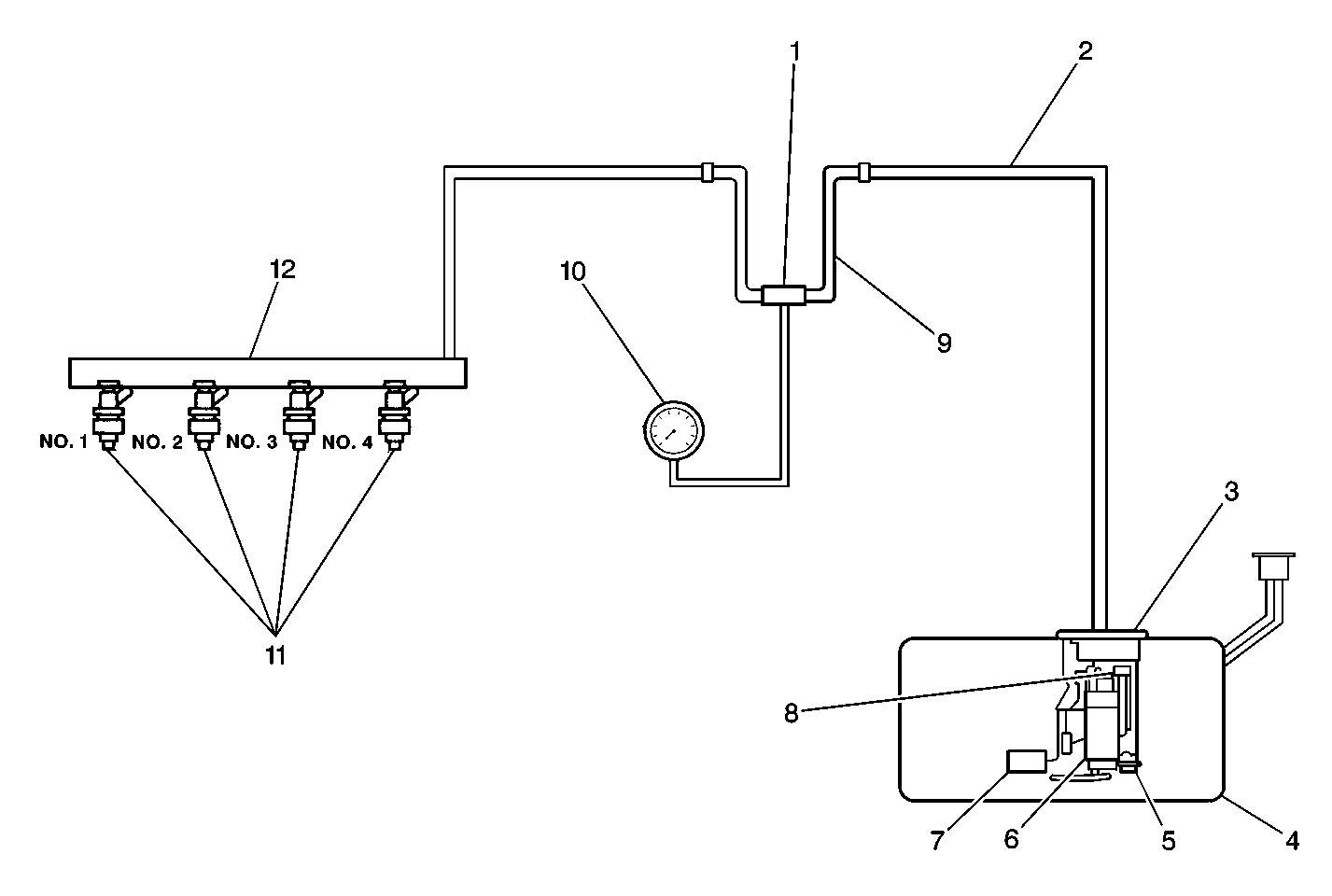The fuel tank has a storage capacity of 50 liters (13.2 gallons).
The tank is manufactured from steel and is located behind the rear seat area.
The tank is held in place with bolts. The shape of this tank
was designed to allow for a constant supply of fuel around the
fuel pump strainer during low fuel conditions and also during
aggressive vehicle maneuvers. The fuel inlet port on the tank
is equipped with an inlet valve. This fuel tank inlet valve
prevents the fuel from spewing into the fuel filler neck during
aggressive vehicle maneuvers or vehicle rollovers. The fuel
tank is equipped with an on-board refueling vapor recovery (ORVR)
system.
The fuel tank, pipes, and hoses should be checked for any road damage
which could result in leakage. Also inspect the fuel filler cap for a correct
seal and any indications of physical damage.
In order to prevent refueling with leaded fuel, the fuel filler neck
has a built-in restrictor and deflector. The opening of the restrictor admits
only the smaller unleaded fuel nozzle. The nozzle must be fully inserted
to bypass the deflector. Any attempt at refueling with leaded
fuel will result in fuel splashing out of the filler neck.
The fuel filler cap is a pressure-vacuum type. A built-in
torque limiting device on the cap prevents overtightening and also eliminates
the escape of fuel vapors. To install the cap, turn the cap clockwise
until a clicking noise is heard. This indicates that the fuel
filler cap gasket (1) is fully seated.
A vacuum relief valve is incorporated into the fuel filler cap. If the
pressure in the fuel tank becomes negative (vacuum), the relief valve opens
to relieve the pressure created within the fuel tank. Only when
the vacuum becomes excessive within the tank does this occur.
Vacuum pressure is also vented through the tank pressure control
valve which is located on the top of the fuel tank.
A pressure relief valve is also located in the fuel filler cap. The
pressure of the fuel vapor within the tank should exceed that for which the
fuel system is designed, the pressure relief valve opens, and
the excess pressure is vented to the atmosphere.

